Related Research Articles
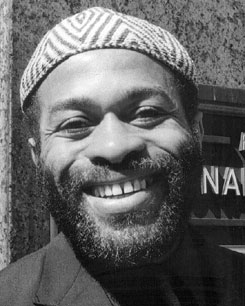
Theodore Joans was an American jazz poet, surrealist, trumpeter, and painter, who from the 1960s spent periods of time travelling in Europe and Africa. His work stands at the intersection of several avant-garde streams and some have seen in it a precursor to the orality of the spoken-word movement. However, he criticized the competitive aspect of "slam" poetry. Joans is known for his motto: "Jazz is my religion, and Surrealism is my point of view". He was the author of more than 30 books of poetry, prose, and collage, among them Black Pow-Wow, Beat Funky Jazz Poems, Afrodisia, Jazz is Our Religion, Double Trouble, WOW and Teducation.

Ishmael Scott Reed is an American poet, novelist, essayist, songwriter, playwright, editor and publisher known for his satirical works challenging American political culture. Perhaps his best-known work is Mumbo Jumbo (1972), a sprawling and unorthodox novel set in 1920s New York.

Countee Cullen was an American poet, novelist, children's writer, and playwright, particularly well known during the Harlem Renaissance.

The Crisis is the official magazine of the National Association for the Advancement of Colored People (NAACP). It was founded in 1910 by W. E. B. Du Bois (editor), Oswald Garrison Villard, J. Max Barber, Charles Edward Russell, Kelly Miller, William Stanley Braithwaite, and Mary Dunlop Maclean. The Crisis has been in continuous print since 1910, and it is the oldest Black-oriented magazine in the world. Today, The Crisis is "a quarterly journal of civil rights, history, politics and culture and seeks to educate and challenge its readers about issues that continue to plague African Americans and other communities of color."

Arna Wendell Bontemps was an American poet, novelist and librarian, and a noted member of the Harlem Renaissance.
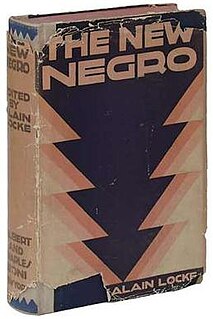
The New Negro: An Interpretation (1925) is an anthology of fiction, poetry, and essays on African and African-American art and literature edited by Alain Locke, who lived in Washington, DC, and taught at Howard University during the Harlem Renaissance. As a collection of the creative efforts coming out of the burgeoning New Negro Movement or Harlem Renaissance, the book is considered by literary scholars and critics to be the definitive text of the movement. "The Negro Renaissance" included Locke's title essay "The New Negro", as well as nonfiction essays, poetry, and fiction by writers including Countee Cullen, Langston Hughes, Zora Neale Hurston, Claude McKay, Jean Toomer, and Eric Walrond.
Jazz poetry has been defined as poetry that "demonstrates jazz-like rhythm or the feel of improvisation" and also as poetry that takes jazz music, musicians, or the jazz milieu as its subject. Some critics consider it a distinct genre though others consider the term to be merely descriptive. Jazz poetry has long been something of an "outsider" art form that exists somewhere outside the mainstream, having been conceived in the 1920s by African Americans, maintained in the 1950s by counterculture poets like those of the Beat generation, and adapted in modern times into hip-hop music and live poetry events known as poetry slams.
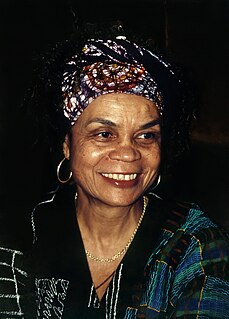
Sonia Sanchez is an American poet, writer, and professor. She was a leading figure in the Black Arts Movement and has written over a dozen books of poetry, as well as short stories, critical essays, plays, and children's books. In the 1960s, Sanchez released poems in periodicals targeted towards African-American audiences, and published her debut collection, Homecoming, in 1969. In 1993, she received Pew Fellowship in the Arts, and in 2001 was awarded the Robert Frost Medal for her contributions to the canon of American poetry. She has been influential to other African-American poets, including Krista Franklin.
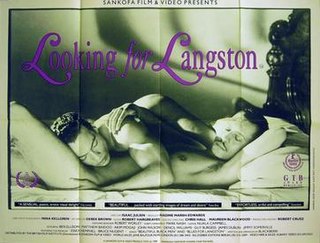
Looking for Langston is a 1989 British black-and-white film, directed by Isaac Julien and produced by Sankofa Film & Video Productions. It combines authentic archival newsreel footage of Harlem in the 1920s with scripted scenes to produce a non-linear impressionistic storyline celebrating black gay identity and desire during the artistic and cultural period known as the Harlem Renaissance in New York. The film has a runtime of about 42 minutes.
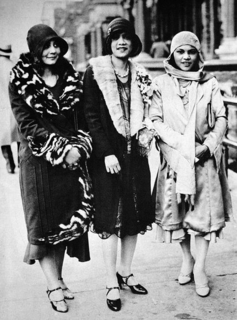
The Harlem Renaissance was an intellectual and cultural revival of African American music, dance, art, fashion, literature, theater, politics and scholarship centered in Harlem, Manhattan, New York City, spanning the 1920s and 1930s. At the time, it was known as the "New Negro Movement", named after The New Negro, a 1925 anthology edited by Alain Locke. The movement also included the new African American cultural expressions across the urban areas in the Northeast and Midwest United States affected by a renewed militancy in the general struggle for civil rights, combined with the Great Migration of African American workers fleeing the racist conditions of the Jim Crow Deep South, as Harlem was the final destination of the largest number of those who migrated north.
The long poem is a literary genre including all poetry of considerable length. Though the definition of a long poem is vague and broad and unnecessary, the genre includes some of the most important poetry ever written.
"Note on Commercial Theatre" is a poem by Langston Hughes written in 1940 and republished in 2008.
A Dream Deferred may refer to:

James Mercer Langston Hughes was an American poet, social activist, novelist, playwright, and columnist from Joplin, Missouri. One of the earliest innovators of the literary art form called jazz poetry, Hughes is best known as a leader of the Harlem Renaissance. He famously wrote about the period that "the Negro was in vogue", which was later paraphrased as "when Harlem was in vogue."
Askia Muhammad Touré is an African-American poet, essayist, political editor, and leading voice of the Black Arts Movement. Toure helped to define a new generation of black consciousness by creating a triumphal identity for the purpose of uplifting the African heritage beyond the oppressive ideas that dominated the time.
"The Weary Blues" is a poem by American poet Langston Hughes. Written in 1925, "The Weary Blues" was first published in the Urban League magazine, Opportunity. It was awarded the magazine's prize for best poem of the year. The poem was included in Hughes's first book, a collection of poems, also entitled The Weary Blues..
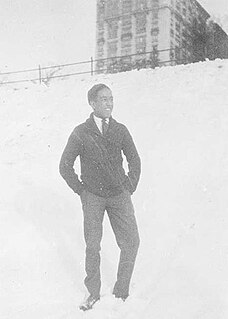
"The Negro Speaks of Rivers" is a poem by American writer Langston Hughes. Hughes wrote the poem when he was 17 and crossing the Mississippi River on the way to visit his father in Mexico. It was first published the following year in The Crisis, starting Hughes's literary career. "The Negro Speaks of Rivers" uses rivers as a metaphor for Hughes's life and the broader African-American experience. It has been reprinted often and is considered one of Hughes's most famous and signature works.
"Mother to Son" is a 1922 poem written by Langston Hughes. The poem follows a mother speaking to her son about her life, which she says "ain't been no crystal stair". She first describes the struggles she has faced and then urges him to continue moving forward. It was referenced by Martin Luther King Jr. several times in his speeches during the civil rights movement, and has been analyzed by several critics, notably for its style and representation of the mother.
"Harlem" is a poem by Langston Hughes. These eleven lines ask, "What happens to a dream deferred?", providing reference to the African-American experience. It was published as part of a longer volume-length poem suite in 1951 called Montage of a Dream Deferred, but is often excerpted from the larger work. The play A Raisin in the Sun was titled after a line in the poem.
Caroling Dusk: An Anthology of Verse by Black Poets of the Twenties: Anthology of Black Verse is a 1927 poetry anthology that was edited by Countee Cullen. It has been republished at least three times, in 1955, 1974, and 1995 and included works by thirty-eight African-American poets, including Paul Laurence Dunbar, Langston Hughes, Georgia Douglas Johnson, James Weldon Johnson, and Claude McKay. The anthology also includes biographical sketches of the poets whose work is included in the book.
References
- ↑ David Kresh.Library of Congress. Langston Hughes and His Poetry; 2009-05-22[Retrieved 2010-04-20].
- ↑ Robert O'Brien Hokanson.Jazzing it up: The be-bop modernism of Langston Hughes.Mosaic: A Journal for the Interdisciplinary Study of Literature.December 1998;31(4):61–83.
- ↑ Langston Hughes.In:Arnold Rampersad.The Collected Poems of Langston Hughes.Alfred A. Knopf;1995.p. 387.
- ↑ Koga Tetsuo. Historical Moments in Langston Hughes' Montage of a Dream Deferred.March 2009[ archived 2011-08-14];60:125–141.
- 1 2 3 Steven Carl Tracy.A Historical Guide to Langston Hughes.Oxford University Press;2004.p. 76–79.
- ↑ Montage of a Dream Deferred.In:William Andrews; Frances Smith Foster; Trudier Harris.The Concise Oxford Companion to African American Literature.1 ed.Oxford University Press;2001. doi:10.1093/acref/9780195138832.001.0001. ISBN 978-0-19-513883-2.